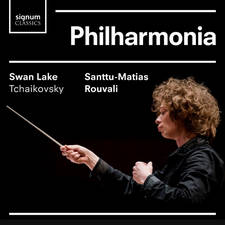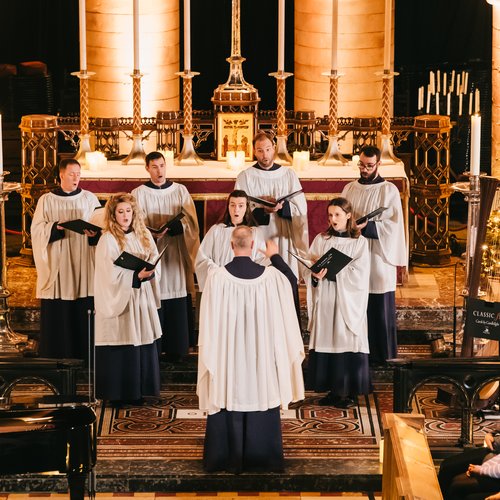10 greatest pieces of music by Gustav Holst
20 September 2024, 15:35

As we celebrate the English composer’s 150th anniversary, we reflect on ten of the best works he wrote, including The Planets and The Bells film score.
Listen to this article
English composer Gustav Holst is famous for his orchestral suites, chamber pieces and choral works.
His reputation seems to rest almost entirely on a single masterpiece: his enduringly beloved The Planets Suite, a seven-movement orchestral suite written between 1914 and 1917.
But Holst is much more than just The Planets, as majestic as the work is.
Here we celebrate the best works Holst wrote, including orchestral music, film music, choral masterpieces and more.
Read more: 15 facts about English composer Gustav Holst
-
The Planets
Gustav Holst composed The Planets after getting obsessed with the night sky, and specifically with astrology. Seven planets are represented by seven different movements in the orchestral piece, and Holst gives each movement a programmatic title to represent the distinct characteristics and myths around the planets. Mars, the first planet we ‘hear’, is the “Bringer of War”, while its nearest neighbour, Venus, is for Holst – and now for the millions of people who have basked in this glorious music – the ‘Bringer of Peace’. Interestingly, Earth is not included among Holst’s collection of planets, an nor is Pluto – not because of what we know now, that it is only technically a dwarf planet, but because it had yet to be discovered in Holst’s lifetime.
Read more: Why did Holst leave Earth out of his orchestral suite, The Planets?

Symphony orchestra’s magnificent ‘Jupiter’ at Royal Albert Hall | Classic FM Live
-
St Paul’s Suite
Trust a very English composer to write a very English piece of music inspired by a very ‘English’ institution. In 1922, Holst had been appointed as Music Director at St Paul’s Girl’s School in Hammersmith, London, and to mark the occasion, he wrote as his first piece in the role an orchestral suite paying homage to English Folk Songs. St Paul’s Suite, a fifteen-minute work composed for string orchestra, features a lively ‘Jig’, an ‘Ostinato’ movement, an ‘Intermezzo’, and a finale titled ‘The Dargason’ – which is a sort of country dance, known to originate from around 16th century.

Holst - St. Paul's Suite Op. 29 (Complete Score)
-
Second Suite in F
Holst’s lively Second Suite in F is a four-movement work written for military band – which is comprised of an augmented woodwind section (there are even a couple of saxophones!), brass and percussion. It features typically rich and colourful Holstian arrangements of English folk tunes, with nostalgic titles. The first movement is ‘March: Morris dance, Swansea Town, Claudy Banks’; the second is ‘Song Without Words, 'I'll Love My Love'; the third ‘Song of the Blacksmith’; and the fourth movement has something in common with Holst’s St. Paul’s Suite (above): it’s called ‘Fantasia on the Dargason’.

Holst: Second Suite for Military Band in F major Op.28-2
-
Hammersmith: Prelude and Scherzo
Holst’s wind band work is most commonly known just as ‘Hammersmith’ and it celebrates the London Borough that it’s named after with noble, melodic brass lines. The piece, which was Holst’s first brass band piece since the Second Suite in F (above) despite it being composed 19 years later, was commissioned by the BBC Military Band in 1930 and premiered by the United States Marine Band in Washington D.C. two years later.

UMich Symphony Band - Gustav Holst - Hammersmith, Prelude and Scherzo, op. 52 (1930)
-
I Vow to Thee, My Country
Popular patriotic hymn, ‘I Vow to Thee, My Country’ may well be even more well known to many than The Planets. But the hymn actually came after the orchestral suite, and its melody is actually an adapted version of ‘Jupiter’. Holst himself adapted it, and renamed the tune ‘Thaxted’ after the small village he lived in, when he was incited to write a musical setting for a poem by British diplomat Sir Cecil Spring Rice.

I Vow To Thee My Country - Festival of Remembrance
-
A Choral Fantasia
Holst wrote A Choral Fantasia for the Three Choirs Festival in 1930, at the invitation of organist Herbert Sumsion. It’s a setting of British poet Robert Bridges’ ‘Ode to Music’ – which itself was written for the 1895 commemoration of Henry Purcell, something Holst had actually had a small part in as a student. The piece lifts the organ part from a background role to that of a main character, giving the instrument an expressive and transcendental solo part. The piece wasn’t particularly well-received at the time of its premiere, but has been praised since for its originality and typically moving melodic moments.

Gustav Holst - A Choral Fantasia (1930)
-
The Bells
Gustav Holst wrote just one film score, and it was for the 1931 drama based on Leopold Lewis’s play, The Bells – which itself was adapted from the French version, Le Juif Polonais by Alexandre Chatrian and Emile Erckmann. The plot revolves around a murder most foul, committed by an inn-keeper against a wealthy patron renting his rooms. Sadly, The Bells is now a ‘lost film’ – and accordingly a ‘lost score’ – which means its negatives, or any copies, have not been found in any archives.
-
Concerto for Two Violins
Holst’s Double Violin Concerto was written for sister violin duo Adila Fachiri and Jelly d'Arányi, who were superstar nieces of Hungarian violinist and conductor Joseph Joachim. It’s in three movements, but played continuously without breaks between them, and it’s typically folk-inspired for Holst, as well as edging into a more atonal — or more accurately, bi-tonal – realm, which got critics divided. Apparently Holst was inspired to write a double violin concerto when he heard the sisters performing Bach’s Double Violin Concerto.

Gustav Holst - Double Violin Concerto (1930)
-
In The Bleak Midwinter
The words for the popular Christmas carol ‘In The Bleak Midwinter’ are a Christina Rossetti poem. But the music any one person knows and loves could be one of two slightly different pieces: Harold Darke’s rather jaunty, major key version; or Holst’s more darkly-shaded take on the melody. Gustav Holst wrote a beautiful minor key melody for ‘In The Bleak Midwinter’ in 1906, for The English Hymnal collection of songs for the congregation. It’s a hymn tune called ‘Cranham’, named after the Gloucestershire village.

In The Bleak Midwinter - Holst - Tenebrae conducted by Nigel Short
-
Symphony in F Major
Looking back in time now to Holst’s 20s, we find his joyful and lyrical Symphony in F Major, dedicated to the pretty Cotswolds, as well as to his admiration for the English designer and writer, William Morris. In what was his first major orchestral work, Holst conjures up green hills, rolling countryside and perfect picture-box villages in this most English of orchestral works. Hurrah.

Gustav Holst: Symphony in F Major "The Cotswolds" (1900)












